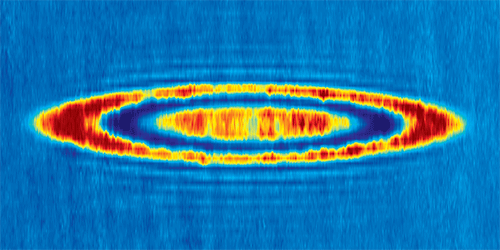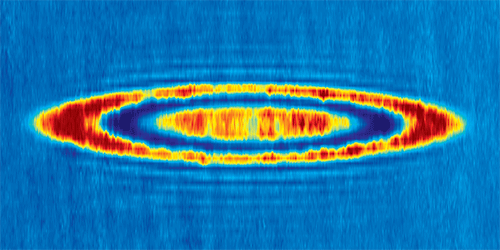Losing Light in a BEC
Two decades ago theorists predicted that the index of refraction in a gas of bosons would be enhanced compared to its value in a classical gas. The effect occurs because bosonic atoms tend to “bunch” into the same momentum state, which amplifies their scattering of light. Although the effect is small, even at low temperatures, the modification was expected to be observable in a gas near its transition to a Bose-Einstein condensate (BEC). Now, Peter van der Straten and colleagues from the University of Utrecht, Netherlands, have, for the first time, observed the predicted enhancement in an ultracold gas of sodium atoms.
The team exploited a technique called phase-contrast imaging, which involves measuring the phase that a laser beam accumulates as it traverses a trapped gas. The real part of this complex phase can be used to determine the atom-density distribution in the trap, providing a way to image the gas, while the imaginary part describes the attenuation of light associated with atoms being scattered out of the trap. Normally, this loss is a nuisance because it interferes with acquiring an image. But Van der Straten and colleagues used it to their advantage. Specifically, they took a series of images, with each image acquisition inducing a small loss of atoms that reduced the density observed in the next image. By summing up these incremental losses, the researchers obtained an accurate measure of the laser’s attenuation from scattering. They then used this finding to determine that the imaginary part of the index of refraction (the part associated with loss) was about 3 times larger in a BEC than in a gas of classical atoms.
This research is published in Physical Review Letters.
–Kevin Dusling





